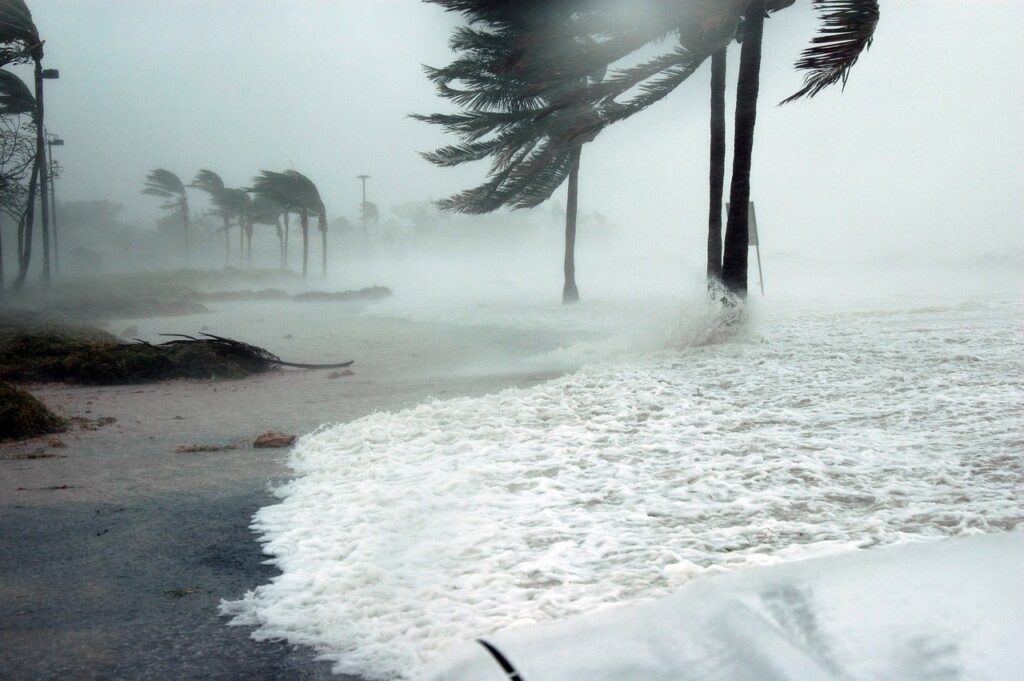
“Near-normal” hurricane activity is anticipated in the Atlantic this year, according to NOAA forecasters with the Climate Prediction Center, a section of the National Weather Service. The 2023 Atlantic hurricane season, which runs from June 1 to Nov. 30, is forecast by NOAA to have a 40% chance of being near-normal, a 30% chance of being above normal, and a 30% chance of being below normal.
A total of 12 to 17 named storms with winds of 39 mph or more are predicted by NOAA. One to four of those could develop into major storms (category 3, 4, or 5; with winds of 111 mph or more), while five to nine of those could become hurricanes (winds of 74 mph or higher). In these ranges, NOAA has a 70% level of confidence.
“Thanks to the Commerce Department and NOAA’s critical investments this year in scientific and technological advancements in hurricane modeling, NOAA will be able to deliver even more accurate forecasts, helping ensure communities have the information they need to prepare for and respond to the destructive economic and ecological impacts of Atlantic hurricanes,” said Secretary of Commerce Gina M. Raimondo.
Due to competing forces, some of which restrict storm development and some of which fuel it, this year’s projection for a near-normal season is driving expectations for a less active-than-usual Atlantic hurricane season.
NOAA scientists forecast a high likelihood of El Nino developing this summer, which can reduce Atlantic hurricane activity after three hurricane seasons with La Nina present. Favorable local circumstances in the tropical Atlantic Basin may cancel out El Nino’s potential impact on storm development. The likelihood of an above-average west African monsoon, which generates African easterly waves and feeds some of the strongest and longest-lasting Atlantic storms, as well as warmer-than-average sea surface temperatures in the tropical Atlantic Ocean and Caribbean Sea that provide more energy to fuel storm development, are among these factors. These elements are a part of the longer-term variability in the atmospheric and oceanic conditions in the Atlantic that favor the production of hurricanes, also referred to as the high-activity era for Atlantic hurricanes, which has been producing increasingly active Atlantic hurricane seasons since 1995.
“As we saw with Hurricane Ian, it only takes one hurricane to cause widespread devastation and upend lives. So regardless of the number of storms predicted this season, it is critical that everyone understand their risk and heed the warnings of state and local officials. Whether you live on the coast or further inland, hurricanes can cause serious impacts to everybody in their path,” said FEMA Administrator Deanne Criswell. “Visit ready.gov or listo.gov for readiness resources, and get real time emergency alerts by downloading the FEMA App. Actions taken today can save your life when disaster strikes. The time to prepare is now.”
The NOAA outlook does not predict a landfall; rather, it describes seasonal activity as a whole. NOAA now publishes seasonal hurricane outlooks for the eastern Pacific and central Pacific storm basins in addition to the seasonal outlook for the Atlantic. In early August, just before the traditional height of the season, NOAA’s Climate Prediction Center will release an update for the Atlantic seasonal outlook for 2023.
More Stories Like This:
- Is Florida the Hurricane Capital of the World?
- 10 Must-Have Items for a Hurricane Preparedness Kit
- Is Florida Really the Lightning Capital of the World?
- Popular Myths about Florida Debunked
- Many Tourists Dread Travel Planning, Report Says
- Ariel Greets Disney World Guests as Movie Premieres
- Holland America Offers 2 World Voyage Cruises from Florida





